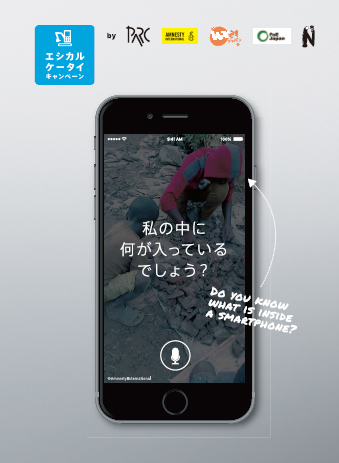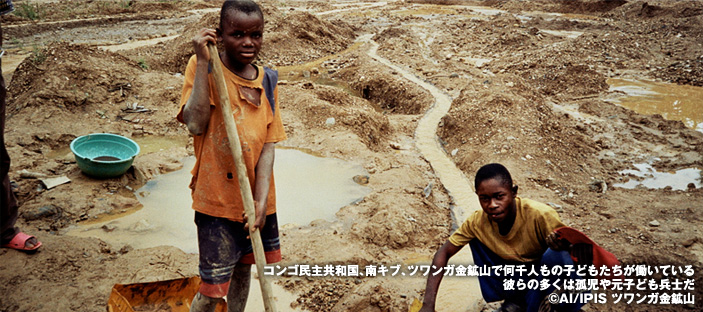
Ethical Keitai Campaign > Problems of mining
Problems of mining
Mineral ores, raw material of metal only exist in certain regions on the earth. The volume is quite scarce and not concentrated in one place. Once one or more veins are confirmed, a large scale mining project is most likely to begin, displacing indigenouse and local residents from their land and clear-cutting the forests on the land. As a result, valuable ecosystems may be lost or harmed and the ancestorial land of people will be exploited.
In case of so-called “surface mining” or “strip mining”, a large quantitiy of land surface is removed instead of digging narrow pits, destroying vegetation while discharging massive amounts of wastes. It is said that one metric ton of excavated land contains only one gram of gold and the rest must be disposed of.
In addition, mining operations use a vast amount of energy and water. Consequently, the maining areas suffer from great environmental impacts. In some cases, the massive wastes contaminate rivers and soil.
Undergroud mining with tunneling is often carried out under very poor working conditions. Especially mines operating with primitive methods, problems of child labor and forced labor have been reported.
Many of the underground mines have strong connections with major capitalists and specific interest groups. In the countries under unstable economic or political conditions, fraud and corruption are likely happen behind the mining projects because they need government permits to initiate mining. As the term “resource curse” indicates, mineral resources are suspected to be a funding source for armed counter insurgent groups.
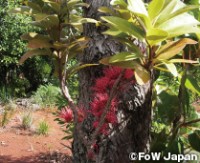
Amiena scanden, the endemic plant of New Caledonia, near the nickel mine.
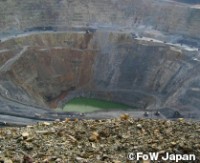
Mining operations often unearth large areas.
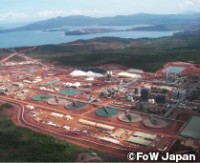
Nickel refinery


